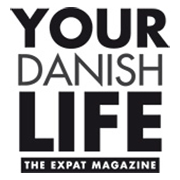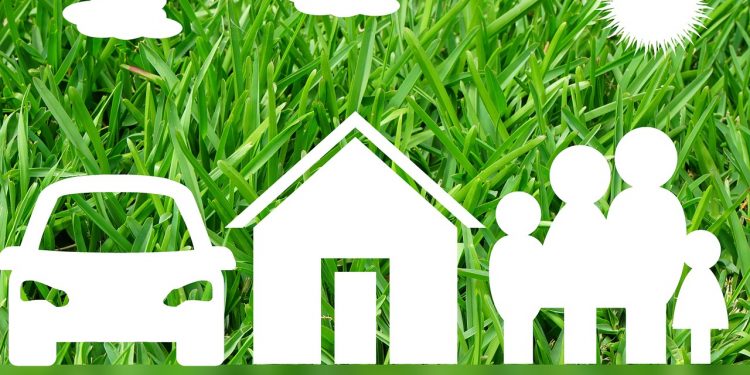Home, house, theft, which ones do you need ?
Here’s our GUIDE to the Danish insurance system and tips for what insurance you need as a tenant.
The article continues below.
By Bente D. Knudsen
Every country has its own regulation and insurance policy structure concerning what companies cover, and more specifically, what they don’t.
Once in Denmark, you have to decide on the kind of insurance you need and which insurance company you feel confident to take out the insurance policies with.
Most importantly, you need to ascertain the insurance coverage you need specifically for Denmark, taking into account what may be legally required.
Also, don’t necessarily take the first offer you get.
”Shop around and get at least three offers” is the general advice from Forsikring&Pension, the insurance companies’ association. The association has 98 insurance companies and pension funds as members.
They have a site called forsikringsguiden.dk. where you can compare prices from 21 of their members for different insurances (house, home, car, accident, etc.).
Even if only in Danish, it can be worthwhile to try it out.
Their customer service centre is open on weekdays with guidance on what you need and how to evaluate the different offers and prices.
According to Forsikring&Pension, they are used to inquiries from non-Danish speakers, so they encourage anyone looking for guidance to call, as they are able to answer inquiries in English.
The article continues below.
Insurances that are legally required: Three kinds
They are quite simple really.
- If you own a car ( moped or motor bicycle), you must take out third-party liability insurance.
- The same goes for dog and horse owners, as you are legally required to have insurance that can cover any damage your dog/horse may inflict on another person or animal.
- If you choose to buy a house rather than renting, you cannot take out a mortgage without having house insurance, which includes, as a legal minimum, building and fire insurance (in Danish: Bygnings og Brandforsikring).
These are the only three types of insurances regulated in terms of an obligation to carry them.
However, as a tenant it can be very important to understand what is covered by your landlord’s insurance and what insurance you need to take out to cover you as a tenant. It is strongly recommended to take out a Home insurance ( see below for more details).
Take note of the differences between House insurance and Home insurance
The Bygnings og Brandforsikring, the building and fire insurance in Denmark, is not equivalent to a complete house or property-owner’s insurance.
So, if you have decided to rent a house or a privately-owned apartment, then it is actually important to find out which kind of house/property-owner’s insurance your landlord has bought for his or her property.
If the landlord (and hence the property owner) has only taken out a policy covering the basic legal requirements, then you need to take this into consideration with regard to the Indbo forsikring, the home insurance you may want to take out.
Most property owners will have more coverage than the standard legal minimum required and will have taken out one that also covers other features (water damage, storm etc.).
For instance, if you are a tenant, it can be important to understand if your new home is covered for Glas og Sanitet.
If this is part of the landlord’s insurance, it means that sudden damages/accidents that damage the glass (window glass) or built in mirrors, sinks and other bathroom utilities (sanitet) as well as the ceramic plates on your stove, are covered by the insurance.
If this is not covered, then as a tenant, you will be obliged to pay the cost of repair for such sudden damage, unless you have it covered in your home insurance. Glas og Sanitet can be added to your home insurance as an extra feature.
The article continues below.
Both as a tenant and as a property owner, you will need a home insurance
Once you know, which insurance your landlord has on the house or apartment you are renting, you can then decide how you want to be covered on your Home Insurance.
In Denmark, such an insurance may have a different name, depending on which insurance company you are checking out.
Aside from the most common name, Indboforsikring, home insurance may also be called Familieforsikring, Hjem or Basisforsikring.
Whatever the name, this is the most typical kind of insurance you will need, whether you are a property owner or a tenant.
The insurance companies’ association, Forsikring&Pension, strongly recommends that expats take out a home insurance policy while living in Denmark, this is an insurance policy that an increasing number of Danes have.
Only one percent of property owners do not have home insurance, for tenants, however, the number is much higher, with almost 14 percent not being covered by one.
The article continues below.
Though there are differences between policies, there are some things that almost all home insurance policies will have in common. Whatever its name, this type of insurance covers your personal possessions and belongings in your home, for instance, in the case of a fire or theft.
It reimburses you for the personal items in your home, which could include your furniture, clothes, sporting goods and electronics, that may be damaged or destroyed by a covered cause of loss.
Take note, your landlord’s house insurance does not cover your personal belongings in the house in case of damage.
In Denmark, home insurance also contains other elements – normally as a standard coverage – such as liability insurance, ansvarsforsiking, which helps protect your assets and covers your defence costs in the event of a lawsuit brought because you or your family members were responsible for causing injuries or damage to other people or their property.
It may also include a legal aid insurance, which covers the cost of legal assistance and going to court. It may also include relocation in the case of a fire in your home.
In some house insurances, relocation is covered, but it is not a standard clause, so again, as a tenant, you would need to check if this is covered by your landlord’s house insurance.
Your home insurance also often covers theft of your belongings outside of your home, but understanding what in particular is covered, is important and also knowing what the deductible or excess amount is (the amount you have to cover), in Danish called the selvrisiko.
Bike theft is typically covered, but not for a very expensive bicycle.
Whatever the cost of the bicycle, you will be required to show proof of ownership, typically a receipt, as well as ascertain that your bicycle was equipped with an insurance-approved lock (keep the receipt for the lock for instance).
The article continues below.
Consider also if you might want personal accident insurance
Despite being covered by the Danish Health System, whatever your accident or reason for needing medical attention is, it can be worthwhile having a separate personal accident insurance, an Ulykkesforsikring, which covers personal injuries resulting from an accident.
If you are an employee, your employer will have one covering you during work. However, if you have an accident in your free time, an accident insurance policy may cover, for instance, damages to your teeth (remember dentists are usually not covered by the public health system).
Most accident insurance policies also pay out a one-time lump sum if your accident gives you at least a five percent loss of mobility as a small compensation for any discomfort the accident has caused you.
You can find information in English, explaining the different Danish insurances, with recommendations on what to look for in a small guide made by Forsikring&Pension, entitled”Insurance for Everyday Needs”, available from their website at www.forsikringogpension.dk.
Support our magazine with a contribution of any size
We do not want to put up a pay-wall, so we need your support and if you find our content relevant and worthwhile, we would value any contribution, however big or small, as a token of your appreciation of our efforts.
How to support:
Transfer any contribution to our bank account at: Your Danish Life/ Danish Expat Media Aps
Danske Bank Account number: 3409 11405673
IBAN: DK68 3000 0011 4056 73
or MobilePay to 2144 1224
Message: Support
Read also our best tips to help you find the best insurance offer here:


